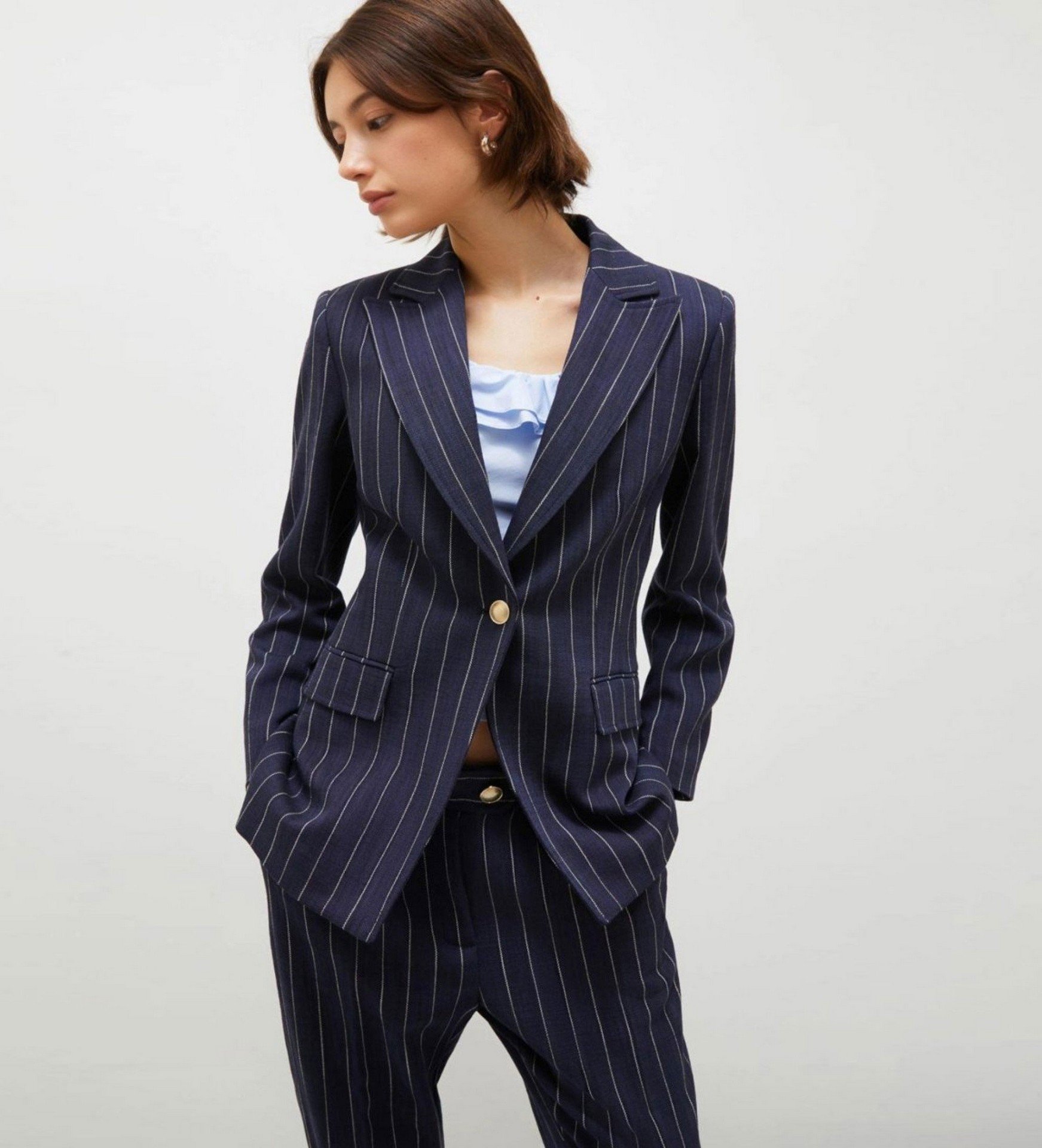When the Met Gala 2025 unveiled its theme “Superfine: Tailoring Black Style,” the fashion industry held its breath. What at first glance seemed like an ode to monochrome elegance concealed something far deeper: a tribute to the history, resilience, and creativity of the Black community through tailoring. Since then, this aesthetic language—uniting structure and soul—has stormed runways and ready-to-wear collections with renewed force, conquering both women’s and men’s wardrobes.

ESD MAGAZINE
By: ESD Team
The Soul of Elegance: History and Reclamation
Black tailoring is not just about color. Above all, it is a statement of identity. Inspired by 19th-century Afro-dandyism and cultural movements that challenged Western dress codes, this movement has evolved into a symbol of power, sophistication, and authenticity.
Designers like Duro Olowu, Grace Wales Bonner, and Telfar Clemens have masterfully reinterpreted it with contemporary codes, adding new narratives without losing its essence. Beyond the perfect cut or well-placed buttons, what truly defines this tailoring is its ability to convey belonging.
The New Tailoring Knows No Gender
One of the most tangible effects after the Met Gala has been the explosion of unisex proposals directly drawing from this aesthetic. What was once considered strictly masculine—the structured suit, pleated trousers, double-breasted blazers—has now been freed from that categorization.
Labels like Acne Studios, Casablanca, and even classic houses like Givenchy are creating collections that blend femininity and masculinity into a single gesture: the precise, powerful black silhouette. Does this mean black tailoring only fits formal looks? Quite the contrary. Today, it’s common to see it reimagined with sneakers, basic tees, or even denim, effortlessly elevating the outfit and becoming a style wildcard for everyday wear.

The Art of Dressing with Intention (and Attitude)
In both menswear and womenswear, black tailoring presents itself as a blank canvas… yet full of meaning. The key lies in attitude: wearing a great suit is not enough, you must inhabit it. And that, perhaps, is the secret to its growing success: black tailoring doesn’t impose, it empowers.
At Esdemarca we’ve already seen how brands like Armani Exchange, Marella, and Hackett London have incorporated this aesthetic into their latest collections, mixing noble fabrics with clean cuts and playing with unexpected details like printed linings or jewel buttons. How to incorporate this trend into everyday life? Very simple: start with a key piece (an oversize blazer, a perfectly tailored suit trouser) and let it speak for you.
The Black Silhouette as a Style and Discourse Tool
The influence of “Superfine” has transcended the purely aesthetic. In an era where fashion intertwines with activism and representation, the conscious use of black tailoring becomes a communication tool. Is it necessary to know the history behind this trend to wear it? Perhaps not, but understanding it adds value. As with any culturally loaded garment, respect and authentic appreciation make the difference.

Black tailoring is not a seasonal trend. It is an evolution, a stance, a way of looking at the world (and being seen in it). At a time when speed and ephemerality dominate, committing to an aesthetic built with rigor, history, and character is undoubtedly a radically contemporary act. Because in fashion as in life, what endures is not just what you wear, but what you stand for with pride.
Image credits: Marella, HUGO



Esdemarca · Copyright © Fusion Lab, S.L. 2025 B66138827 · Calle Recerca, 1, 08850 Gavą (Barcelona), Spain
Customize cookies
WELCOME TO THE ANNIVERSARY OF ESDEMARCA
We have a gift just for you
Register now using the button below and receive
a 5.00 € discount on your first purchase*.
*For a purchase over 50.00 €. Discount applicable only with registrations from this window.
✕CONFIRM YOUR SHIPPING DETAILS:

